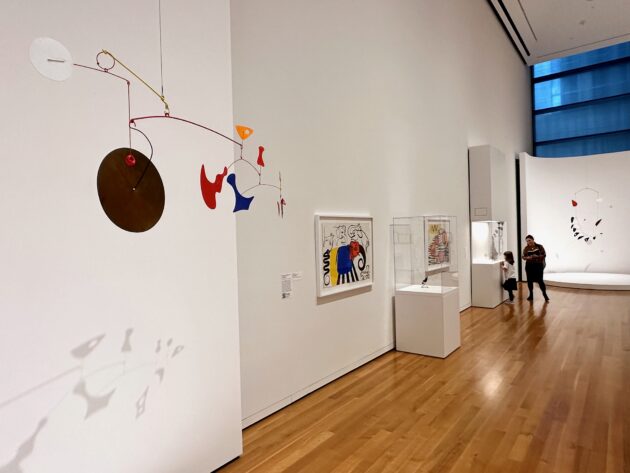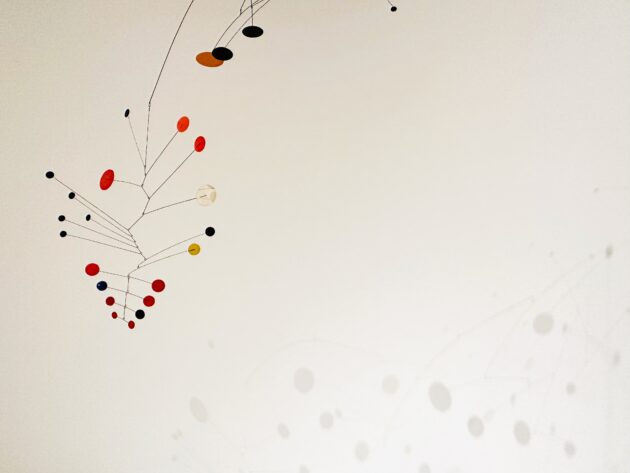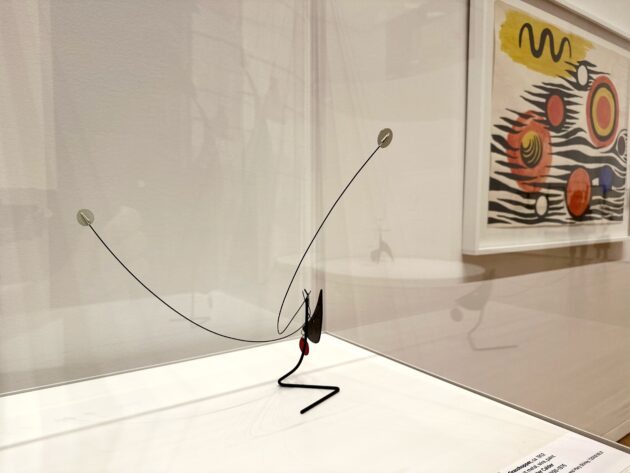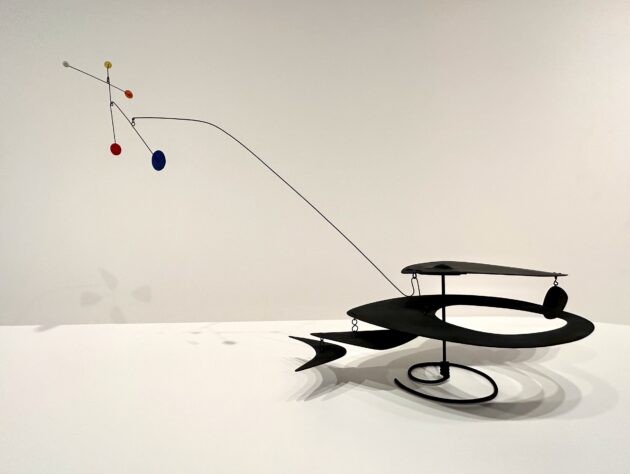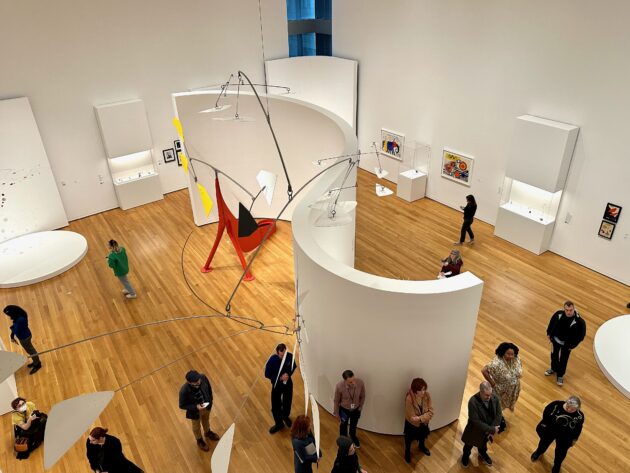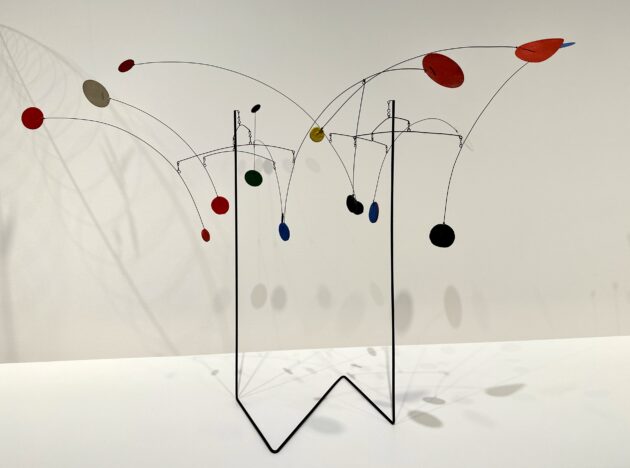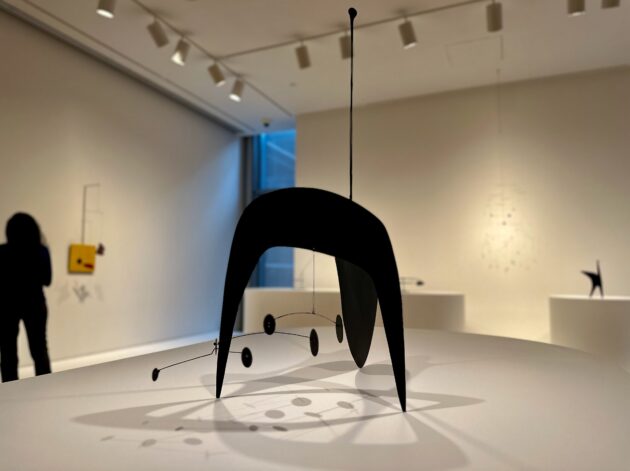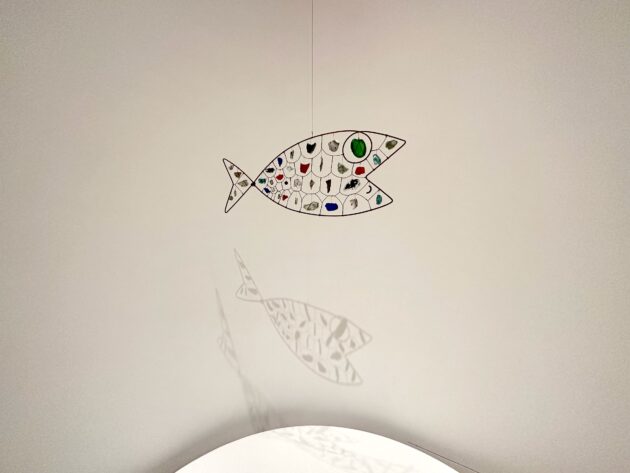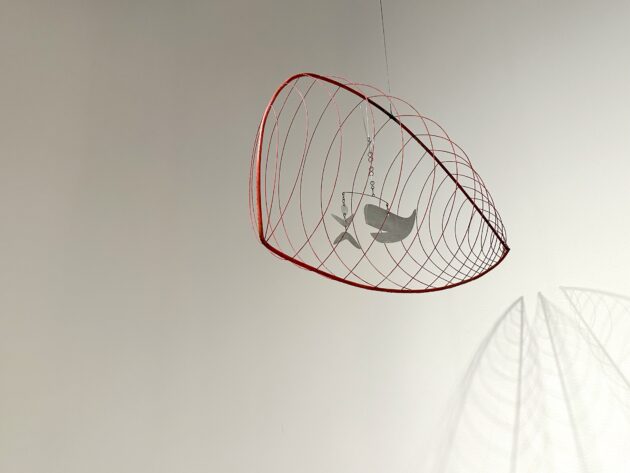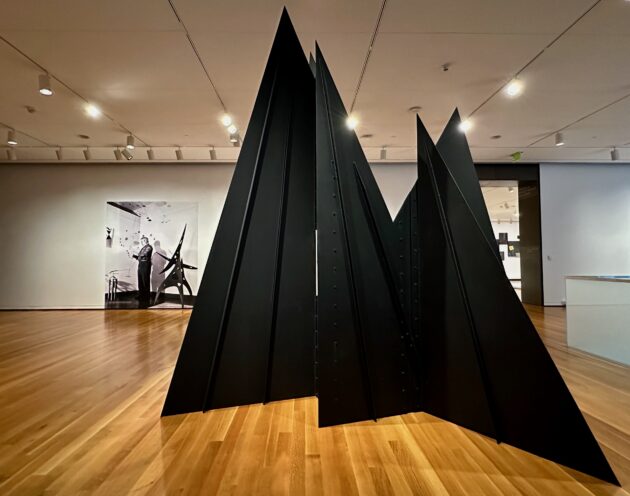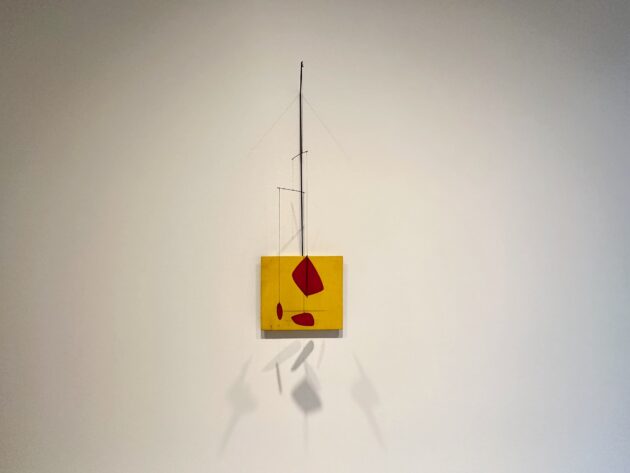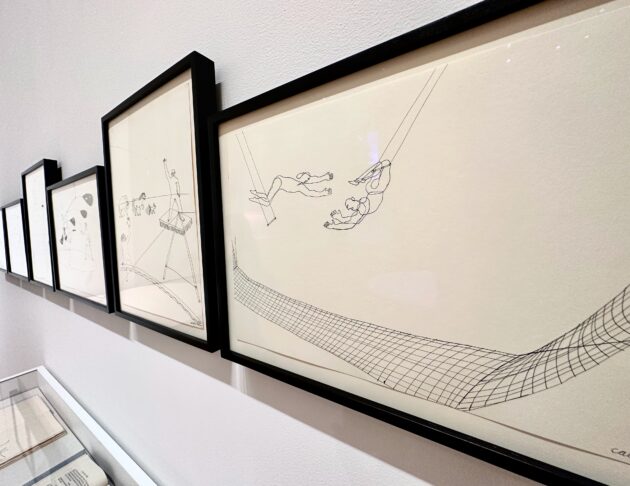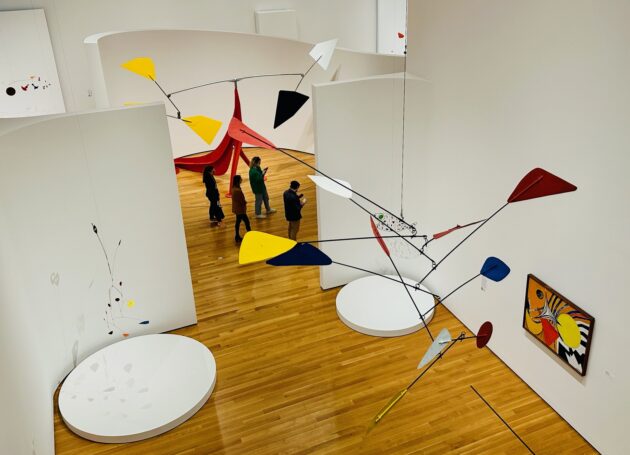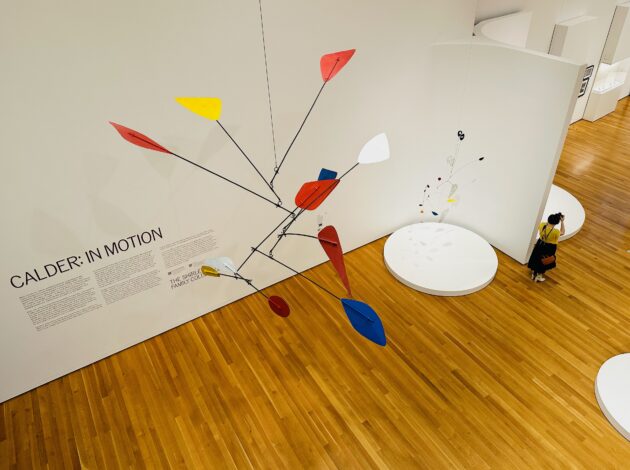
A major new exhibition and multi-year initiative celebrating the life and work of artist Alexander Calder has opened at Seattle Art Museum, with a variety of colorful mobiles, sculptures and more demonstrating Calder’s lasting contribution to modern art.
The exhibition, “Calder: In Motion, The Shirley Family Collection,” is a gift from former Microsoft President Jon Shirley and his wife Kim and features more than 48 works of art from the couple’s private collection. It centers around a group of hanging and standing mobiles dating from the 1920s to the 1970s.
During a preview on Tuesday, the Shirleys spoke about how they hope Calder’s work and outreach programs by SAM to attract people to that work will draw more visitors downtown and play a part in revitalizing the city’s core in the wake of the COVID-19 pandemic.
“This exhibition exceeds our greatest hopes,” Jon Shirley said. “Everything now looks better than it did in our house.”
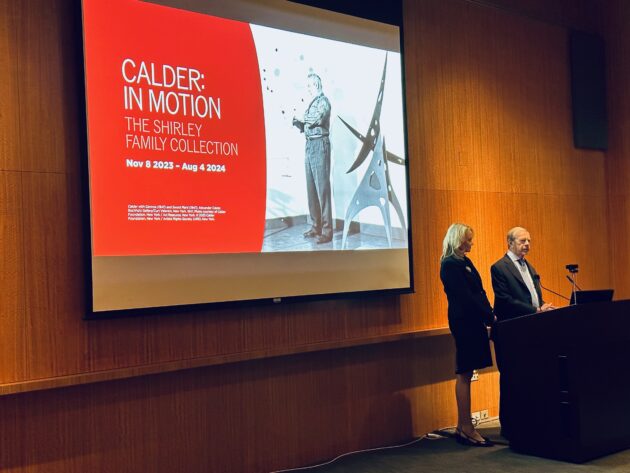
Indeed, across multiple galleries in the museum, Calder’s works pop against high white walls and simple displays. The double-height gallery, a space designed for large-scale works, features several overlooks from the floor above for views down onto gently moving mobiles.
Shirley joined Microsoft in 1983 as president, chief operating officer and director and is credited with overseeing the construction of the Microsoft headquarters campus in Redmond, Wash. He retired in 1990 and left the board of directors in 2008.
The Shirleys have long supported the Seattle Art Museum and currently serve on the museum’s board of trustees. Jon Shirley served as chairman of that board from 2000 to 2008, and was instrumental in the development of SAM’s Olympic Sculpture Park and the acquisition of Calder’s sculpture “The Eagle,” which is on display there.
“They’ve given us yet another gift of incredible magnitude,” SAM interim director and CEO Kimerly Rorschach said of the Shirleys.
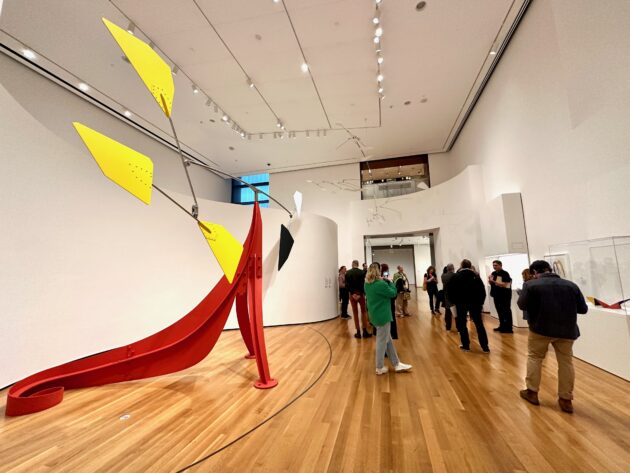
Jon Shirley bought his first work by Calder 35 years ago and grew the collection with his late wife, Mary. Called one of the most important private holdings of Calder’s art, the exhibition highlights Calder’s most important themes, styles, and materials.
Shirley said Calder’s hands-on creation of art always appealed to him, and while artificial intelligence is a big deal at Shirley’s former company and across the tech and cultural landscape, art remains a physical creation in his view.
“It’s always been a hands-on thing,” Shirley told GeekWire. “Yeah, you can tell the metaverse to create art, but you have to convince the public that that’s art. They have to like it, and it has to appeal to people. Some AI machine might produce one really great thing, but I don’t think the artists of the world need to be worried about AI taking their jobs away.”
As far as AI is concerned, Shirley thinks the tech giant is being very smart with the ways it’s pursuing the technology.
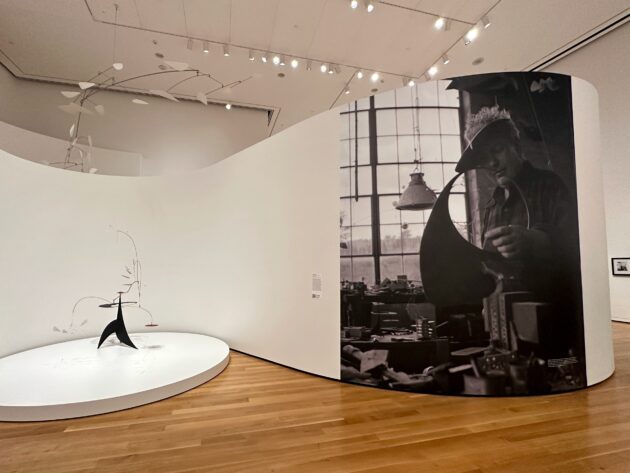
Shirley knew another Microsoft vet — and well-known art collector — by the name of Paul Allen. He said Allen showed him his collection and asked Shirley a couple times what he thought of things, but he said Allen was “going down his own special path.”
Ultimately, after his death, Allen’s vast collection was auctioned off by Christie’s for more than $1.5 billion. The Shirleys preferred not go the auction route and they made the move to bring their Calder works and a $10 million endowment to SAM — as a lasting gift to the museum and the greater Seattle community.
A week after Amazon founder Jeff Bezos announced that he was leaving Seattle for Miami, Jon Shirley said his own philanthropic pursuits demonstrate that it’s important to have ties to a place.
“Wherever you are, and you put some roots down, you try and help the community in whatever ways you can,” he said. “So many people in the tech world want to pick some particular cause where they can measure the outcome. It becomes so transactional. In some cases it might be great, in other cases I don’t think it helps at all.”
For more details on Calder, the collection and the exhibition, visit here. Keep scrolling for more GeekWire photos from “Calder: In Motion” at Seattle Art Museum:
